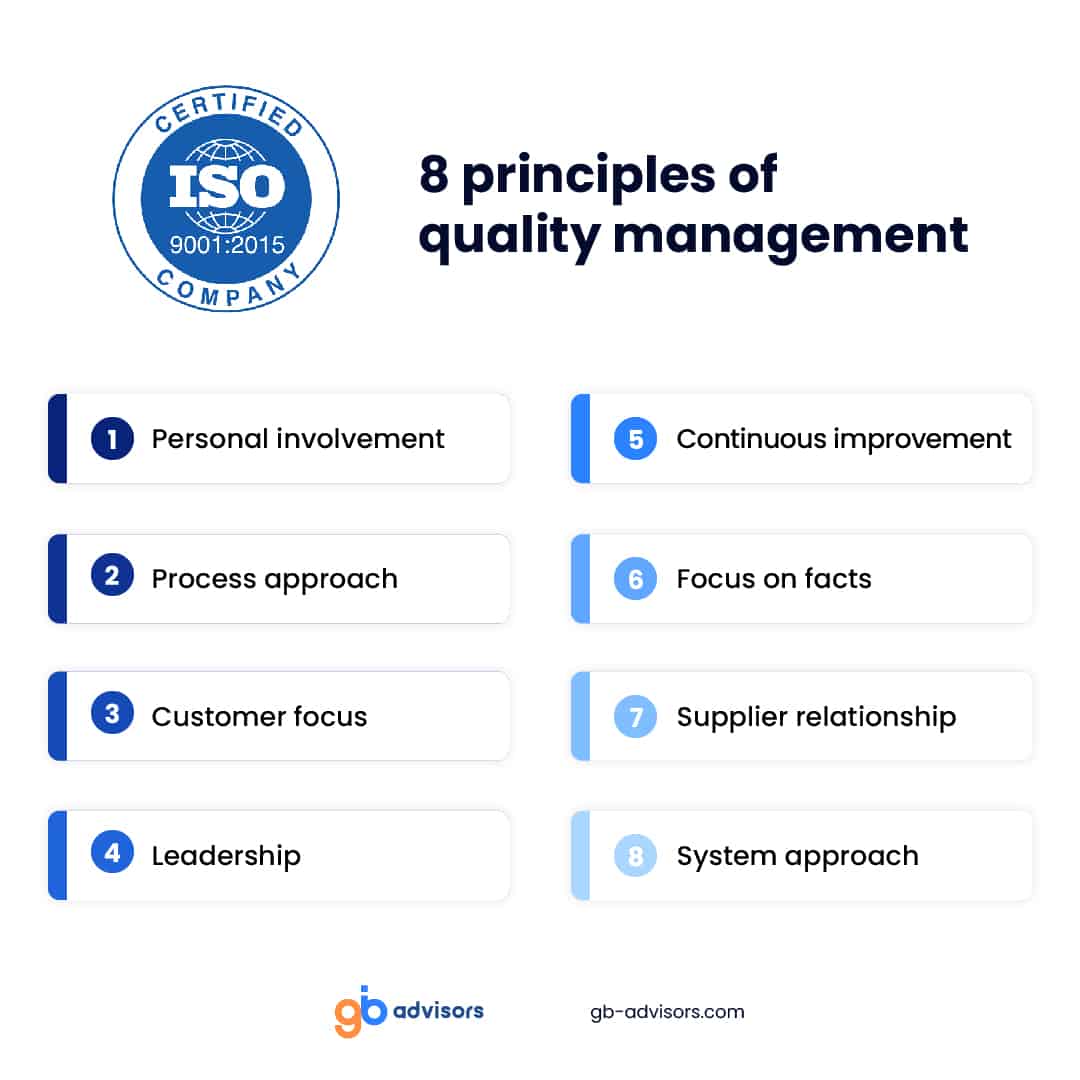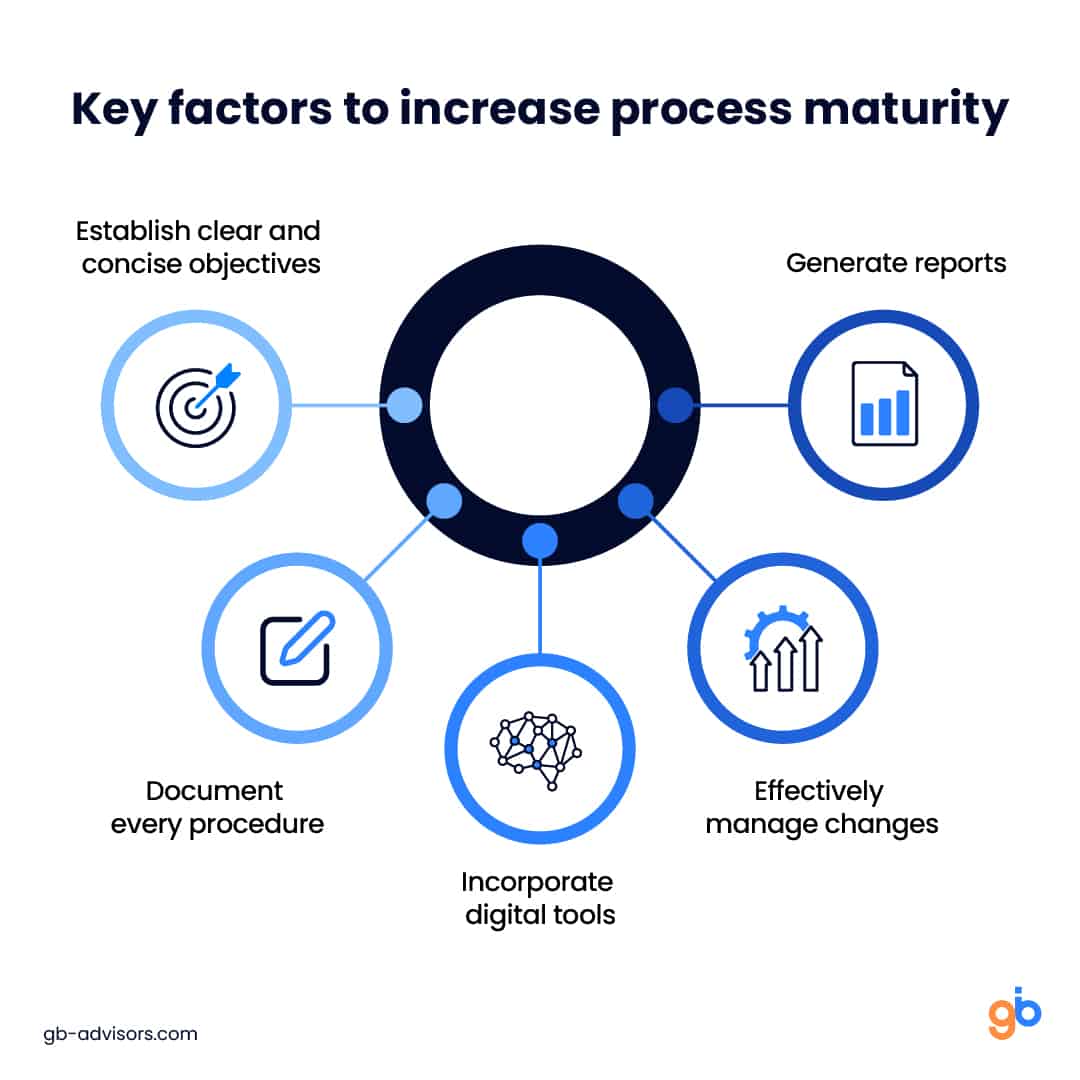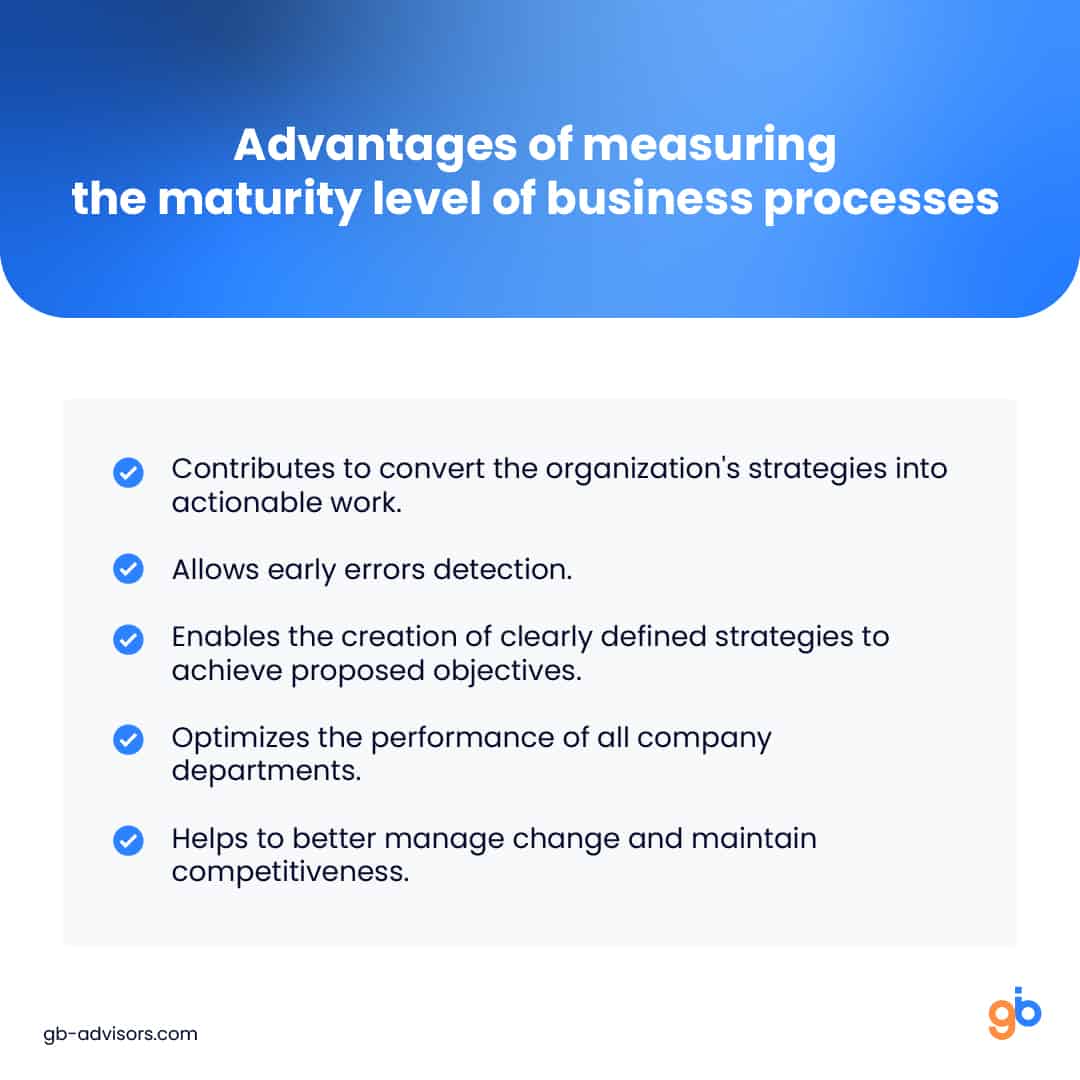What is the level of process maturity in your company? Do you know what scale you are on? How often do you measure this level of maturity?
Technological evolution has given companies the opportunity to exponentially improve the speed and quality of their service delivery. For example, thanks to new communication channels such as online chat or social networks, customers can make their requests more simply.
Of course, not all organizations take advantage of technological advances. For some, the changes in the digital era have resulted in business failure. Why? Because only those companies that are able to adapt can manage to develop and endure for many years.
Maintaining competitiveness is something that can only be achieved by those companies with the capacity for continuous improvement. This capacity, in turn, can only be achieved by achieving true maturity of business processes. If you have not yet asked yourself any of the questions at the beginning of this article, don’t worry, it is a good time to start.
Constantly measuring the maturity of business processes is not only good, but necessary for any company, because this assessment is able to show more clearly where the failures are and what are the opportunities for improvement of the organization.
Interested in learning more about this topic? Don’t miss this article we have prepared for you.
What do we mean by process maturity level?
Process maturity is a state that, through the passage of stages called maturity levels, brings the organization and the operational and technology management system to an optimal state of performance.
Measuring and scaling the maturity level can be challenging for many companies.
However, there are several frameworks that present best practices to support organizations in their positioning and then their evolution on the maturity scale.
These models are descriptive and have:
- A positioning and orientation objective.
- A comparative vocation for internal or external benchmarking.
Key questions to determine the maturity level of your processes
Starting any change and improvement process must begin with self-assessment. The most basic and effective way is to begin by asking yourself the right questions. To that end, we have compiled a couple of questions that may help you start:
- How well documented are the company’s internal processes?
- How well are they progressing toward objectives?
- Are audits performed to verify that the processes are being adequately fulfilled?
- Does the company have defined metrics to evaluate process performance?
- Is your system of record keeping isolated to different divisions, or are reports integrated into the various business tools?
- Is there an ongoing training and refresher program to keep staff aligned with new trends and best practices in each of the processes?
- Are your processes automated or are they executed manually?
- Do you use machine learning systems and apply them in the development of products/service models or in data analysis for decision-making?
3 Models for achieving process maturity
To measure process maturity, models, or frameworks have been designed. These models function as a guide that allows you to evaluate and improve the way processes are currently executed in your company.
In the following, we will discuss three of the most popular models: the Business Maturity Model Process (BMMP), the ISO 9004 standard, and the Gartner Model.
Let’s take a look!
Business Process Maturity Model (BMMP)
The Business Process Maturity Model (BPMM) is designed to help organizations assess and improve their business practices.
The BPMM establishes clear and precise parameters that help measure progress toward maturity in each specific area. It proposes the following 5 levels:
Initial:
Here, inconsistency in processes is the norm, and so it is really difficult to predict results. The main objective is to introduce improvements such as automation to achieve productivity by encouraging people to overcome challenges and complete their tasks.
Managed:
Organizations focus on continuously monitoring and improving processes. The objective is to ensure regular reviewing and updating of the processes to ensure they remain relevant. Also, it is important to create an environment where collaboration is encouraged and data is collected to support decision-making.
Standardized:
Here, companies focus on using consistent methods and processes in all areas. So, companies need to introduce guidelines and standards to ensure that everyone is working in harmony. In addition, it is essential to establish systems that allow feedback loops and obtain information on customer needs to continuously improve products and services.
Predictable:
At this level, organizations with already standardized processes focus on anticipating and taking proactive steps to ensure satisfactory results. The goal at this point is to count on a system that allows collecting stakeholder feedback to identify new opportunities and trends.
Innovative:
Organizations operating at the highest level of maturity aim for continuous improvements, developing efficient processes, and instilling innovation in their daily operations.
ISO 9004 Standard
In 2009, ISO published the 9004 standard, also known as the Advanced Management Standard. In 2018 this standard was updated and to this day remains one of the main references in the promotion of business self-assessment and continuous improvement.
The main objective of this standard is to function as a guide for those ISO 9001-certified organizations that wish to go beyond meeting the minimum requirements for a quality management system and improve performance to achieve sustained success. To this end, the standard is based on 8 Quality Management principles that govern ISO 9001:

Gartner Model
The Gartner model divides the maturity scale into 5 levels, numbered from 0 to 4:
Level 0
The first level or level 0 corresponds to the chaotic tier characterized by improvised, undocumented and unpredictable IT activities. It includes several support centers, minimal IT operations, and a low level of user satisfaction.
At this level, companies:
- Do not have a centralized Help Desk.
- Are unable to prevent most incidents effectively.
- Lack of adequate IT infrastructure management.
- Respond to events in an improvised manner.
Level 1
The second tier or level 1 corresponds to the reactive level, which includes organizations that only extinguish fires, and that, although they have a basic inventory of tools, are unable to integrate them, resulting in the creation of many information silos.
At this level, companies:
- Possess more or less detailed knowledge about the functioning of their components.
However,
- They still lack a comprehensive view of all processes and assets.
- They face many problems when planning activities due to the large amount of time they spend trying to react to events that get out of control.
- Concentrate on minor objectives and lose focus on more important goals.
Level 2
Level 2 is the proactive level that includes those organizations capable of analyzing trends, establishing thresholds, forecasting issues, measuring application availability, automating their activities, and achieving mature processes to manage issues, configuration, change, assets, and performance.
At this level, companies:
- They use leading indicators to quickly detect future incidents.
But,
- They have great difficulty in predicting the outcome of complex scenarios.
Level 3
Level 3 is the service level that groups together organizations that view IT as a service provider. Here, the organizations already:
- Define the services and know the costs.
- Guarantee Service Level Agreements (SLA).
- Measure and report on service availability.
- Integrate processes and have excellent levels of process management.
Level 4
Level 4 corresponds to the value level, which includes organizations where IT represents a strategic partner. These companies link IT and the organization’s data to improve processes. This collaboration or linkage translates into:
- Better infrastructure management.
- Optimal alignment between processes and business.
- Optimal risk management.
Key factors to increase process maturity

- Establish clear and concise objectives: the objectives must be supported by a strategic and achievable plan.
- Document each procedure: documenting is to have organized the relevant information to be able to draw a map or a route with it, in which we can identify difficulties, inefficiencies, and especially possible improvements.
- Incorporate digital tools: task management software, operations management software, etc., that allow you to automate, increase visibility, facilitate access to data, and standardize processes.
- Manage change effectively: adopting a systematic approach to implementing change in an organization minimizes staff resistance and enables business growth and innovation.
- Generate reports: Reports are essential to identify process improvements. It is essential to emphasize the quality of the final product and customer satisfaction.
Conclusion
Measuring the maturity level of your processes guarantees optimal results in every project you undertake within your organization, generating productivity, operational efficiency, and greater customer satisfaction.
So, have you already determined the maturity level of your company’s processes, or do you need help? Are you looking for digital solutions to help you achieve continuous improvement?
If you need assistance in this area, contact us and tell us which processes you want to start optimizing 😊




